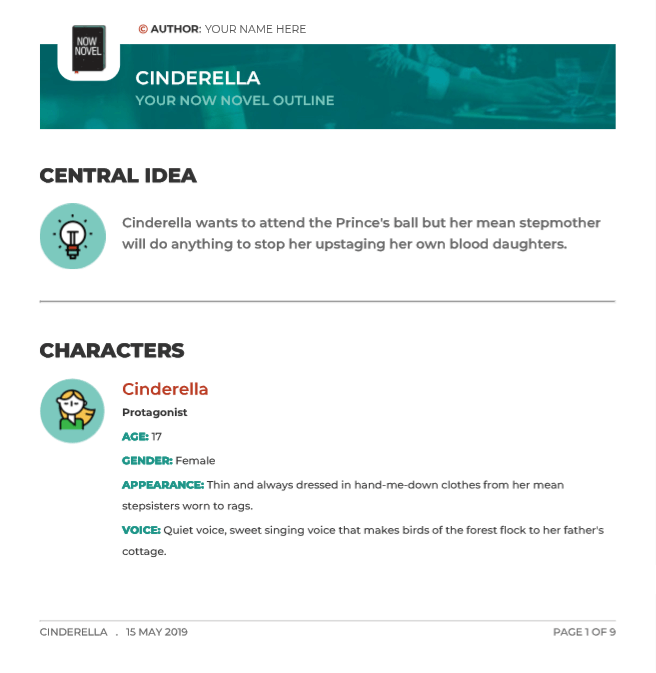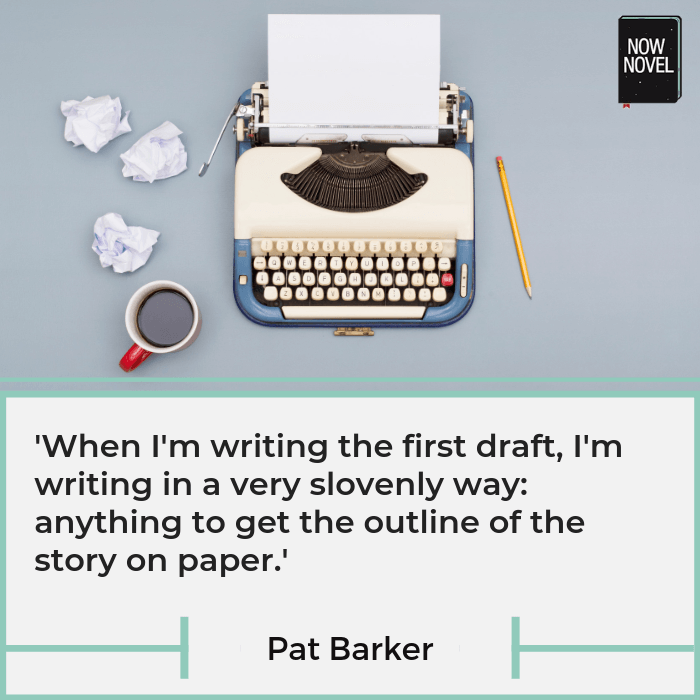Many authors enjoy the creative freedom of not having any structure to begin. Yet writing a story outline has many benefits. A flexible plan makes brainstorming ideas, finding possible character arcs and other parts of the writing process so much easier. Read seven simple steps to write an outline for a novel that will help you progress further:
1. Find and finesse your novel’s central idea
Great story ideas don’t always come in a flash of inspiration. Sometimes they take a mix of curious play and hard work. There are several techniques you can use to find ideas.
A novel’s central idea can ideally be boiled down to an intriguing logline, a two-line summary that hints the central conflict for the story enough to intrigue readers. Consider this example, the logline for Stephen King’s 2018 novella Elevation:
A man who is losing weight without getting thinner forms an unlikely alliance with his neighbors who are dealing with prejudices.
Obtained via Hawes Publications’ database of bestseller loglines
This logline for Elevation gives intriguing conflicts – the man’s conflict with a supernatural-sounding and disturbing situation, as well as the neighbours’ more everyday (yet equally disturbing) struggle against prejudice.
Reading this novel summary, we wonder how the man and his neighbours’ core conflicts intersect.
You could easily use the above condensed idea to begin writing a scene from the story (such as the moment the man discovers the strange fact he is getting lighter but not losing mass). Try writing the opening paragraph for a story using King’s idea as a prompt.
2. Mine your central idea for characters to outline
How do you write a novel outline once you have your story’s core scenario? Look to that idea for character ideas. Brainstorm people who might emerge from your starting situation.
For example, taking the logline for King’s novel above, we might decide to outline:
- The wasting-away protagonist
- One of the neighbours enduring prejudice
- The neighbours’ primary antagonist, the main driver of the prejudice
Adding profiles for characters fulfilling different roles (such as ‘protagonist’ or main character, ally, adversary, love interest), is a great way to start expanding on your initial premise. Or you could keep finessing your first character.
For example, if you started with King’s main character, you could ask:
- When does he discover the situation with his strange weight loss?
- Who is he? (What does he love, hate, want, need, desire?)
- Why is he losing weight? You could begin brainstorming the patterns of cause and effect that could underlie the plot
- Where is he when your story begins? (For example, does he discover the weight loss via a routine checkup at his GP?)
- What could happen as a result of his primary situation (does it imperil his health? Or could there be more fantastical results. For example, he becomes so light he has to hold onto things not to float away?)
The ‘5 W’s’ above are useful questions to ask (who, what, why where and when) about any character.
Make your outlining task easier and create detailed character profiles in the ‘Characters’ section of Now Novel’s outlining tool, and see them all come together in a single, useful document you can refer back to as you draft to keep track of your ideas:

3. Outline the rise and fall of your novel’s core plot
Once you have a few character ideas, brainstorm situations you could put your characters through.
It’s helpful to think of your story’s plot in terms of rising action (events that increase in tension, suspense, uncertainty or conflict) and falling (events that reduce these elements). Or, as we’ve used rising and falling plot in the ‘Core Plot’ section of our outlining tool, you could plan your plot in terms of rising events that move characters closer to their goals, versus falling events that (obstacles, wrong turns) that push goals further away.
For example, King’s weightless protagonist could:
- Discover the cause of his weight loss
- Confide in a friend who helps him come up with a plan to stop the process
- Find certain advantages he likes (e.g. being able to levitate slightly above the crowd for a great view of the stage at a music concert)
Falling plot points could be events such as:
- He weighs himself again and he’s lost way more weight than usual overnight
- He starts noticing other worrying physical symptoms
These are just some examples. Using a step-by-step prompted process to work out your plot outline, one that weaves in the character motivations you’ve brainstormed already, will make the process easier.
4. Brainstorm interesting settings
A good story cannot be all plot and character development. Interesting chains of cause and effect (and characters’ reactions to them) are important. Yet anchoring this all in a sense of place, in visual detail and time, will help bring your novel’s world to life.
Taking Elevation as an example still, you might decide to outline likely places the story will take us to, given the parameters of your main idea:
- Your main character’s home
- The home of the neighbors who are grappling with prejudice
- The doctor’s office
- Your MC’s place of work
Think about each initial setting imagine. How do your characters feel about these places? How do they interact with them? What does this say about them?
Anchoring your story to a sense of place and imbuing that place with feelings such as contentment, fear and others will give each place in your fictional world its own varied character.

5. Revisit and expand your central idea
Once you have a fuller idea of your story, of who your characters are and where your scenario could take them, you may have new ideas and subplots to add on to your starting idea.
For example, perhaps King’s weight-losing man talks to his neighbour over the fence about his situation. The neighbour confides in return the prejudice he’s recently received. Perhaps they agree to help each other.
Begin fleshing out your briefer, logline summary with more detail.
Ideally, you could expand your more concise initial idea into a page-long narrative summary of how the story develops from the opening situation.
That could is important: One thing to remember is that an outline is a guide, a treasure map (to where your glittering future story lies buried). It’s not a last will and testament, so feel free to deviate from it as you want.
6. Outline scenes’ skeletons
There’s that famous spiritual song that goes ‘The hip bone’s connected to the thigh bone, the thigh bone’s connected to the…’ and so on (‘Dem Bones’). Building the blueprint for a story is like that song in that it’s all about finding what connects to what, and why.
Draft ideas for scenes’ events in simple, summary terms a chapter or two ahead. This gives you a sense of purpose and focus for each scene. When you draft, you know ahead ‘this key event should happen during this specific chapter’.
That knowledge can be a comfort when you feel lost (as can happen) in the detail of your expanding story.
7. Add more to your outline as you draft
Discussion surrounding outlining often tends to make outlining and drafting out to be a linear process. You outline, then you draft. This linear approach might not be ideal for your for various reasons, for example:
- You find the idea of creating a complete outline upfront either daunting or limiting in that a lot will be decided already
- You won’t know certain story developments until you’ve lived in your characters’ points of view, in their shoes, a little
Remember: Treat your novel outline as a working document. As you discover new characters, new locations, new subplots while you draft, add them to your outline in summary form. You can work back and forth between the two. Try our free Google Docs app with your Now Novel outline to view your helpful summaries of your best ideas alongside your writing space easily.
Simplify your outlining process: Use Now Novel’s step-by-step tool to develop a detailed outline and have a plan to finish that you can keep to.


2 replies on “How do you write an outline for a novel? 7 easy steps”
Yeh! Great tips. Thanks for sharing this article, it can help me out to publish my books. Keep sharing such type of helpful articles.
[…] to Outline Your Novel in 5 Steps: Master Novel TemplateHow do you Write an Outline for a Novel? 7 Easy StepsHow to Outline a Novel with TemplateHow to Outline a Novel (with Template) from SquiblerBook Outline […]